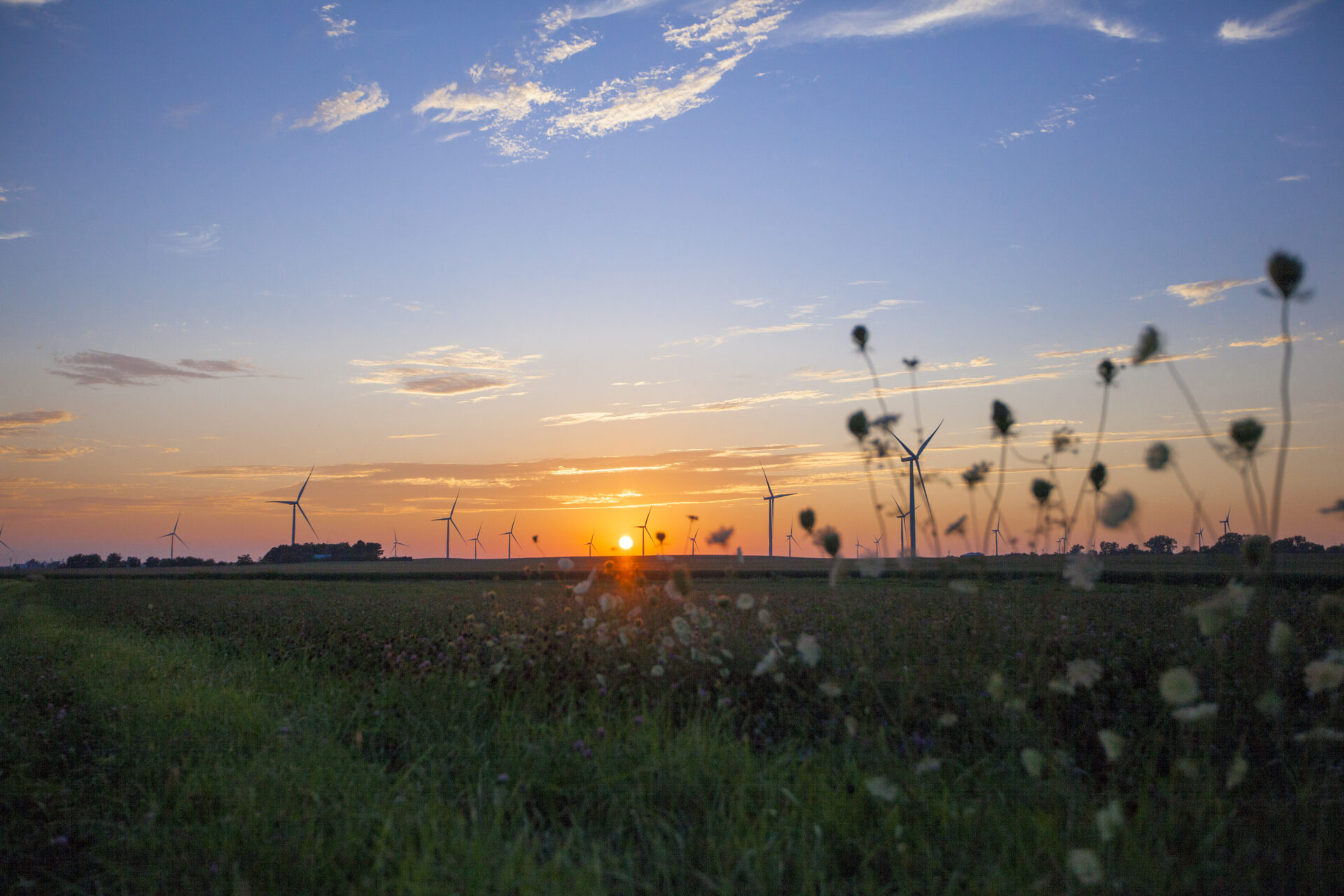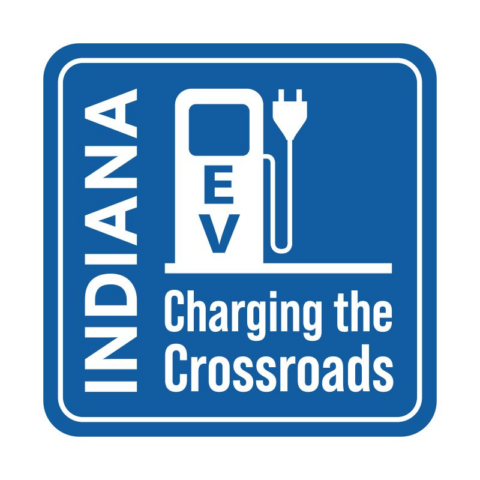
With a mission to accelerate the clean energy transition in Indiana, McKinney Family Foundation, Herbert Simon Family Foundation, and U.S. Energy Foundation (EF)—in partnership with a powerful network of grantees and other allies—have propelled unprecedented progress in the state.
Neighboring Midwest states Michigan, Minnesota, and Illinois, with leaders who are more inclined to support a clean energy transition, have all announced ambitious “100% clean” goals by 2035, making the Midwest a powerful player in keeping the U.S. on track to achieve zero-emissions by 2050. Indiana has taken a different approach than its neighbors and adopted market-driven strategies to voluntarily move beyond coal and attract new jobs. For example, electric vehicle (EV) battery plants led by Stellanis, Samsung SDI, and StarPlus Energy are investing more than $5 billion in battery manufacturing facilities in the Hoosier State.
Indiana is the third top coal energy-producing state in the nation—following Texas and Missouri. For the past 200 years, coal was the cheapest and most abundant energy source. It also came with costly and lasting environmental and health consequences. The legacy of super polluters has had devastating health impacts on the state, particularly in northwestern and southern Indiana, as well as states “downstream.” Toxin-laden coal ash, which has gone unregulated, has been responsible for poisoning important sources of drinking water, such as the Ohio River, among others.
Now—finally—coal plants in our state are being retired and replaced by cleaner energy sources. Currently, roughly 11,000 megawatts of coal are on track to be retired in Indiana, allowing a shift to more cost-effective clean energy that will help customers save money and improve health outcomes. Advocates here have made incredible, hard-won progress: Four out of five investor-owned utilities—NIPSCO, Centerpoint (formerly Vectren), AES (formerly IPL), and I&M—have committed to eliminate coal from their power-generation portfolios by 2030; Duke has plans to do the same by 2035. This work is happening with intentionality and the knowledge that local, family-supporting jobs are key to revitalizing communities affected by coal plant retirements while advancing the state toward a clean energy future.
State advocates here know that the case for clean energy has to be made by individual consumers, and that state and municipal action will be led by economic proof. That evidence is building as more local wind and solar projects come online and reduce customer bills statewide. In northern Indiana, NIPSCO’s first two solar projects operating in White and Jasper counties are bringing in $45 million and $53 million dollars, respectively, in new tax revenues to those counties—enough to help re-open a local amusement park. In southern Indiana, Centerpoint Energy was able to lower customer bills by about $5 per customer a month (for a total of $53 million) by securitizing the remaining value of its coal plants at a low interest rate.

EV manufacturing plants in Indiana are making the adoption of efficient cars and trucks a more popular alternative to internal combustion (gas-powered) engine vehicles, thanks to state and federal purchase incentives, the expanding EV charging infrastructure available statewide, and the local jobs created. A new public dashboard for tracking automobile registrations by fuel type shows that since 2018, the total number of EVs registered in Indiana has grown five-fold, from just 3,400 in 2018 to more than 18,500 in 2023. Most of the purchases have been in the state’s wealthiest counties, so there is work to do to ensure a more equitable transition.
We are working to make sure that the transition to electrification provides benefits to those most in need of both pollution mitigation and lower costs of transportation. To that end, we are supporting groups that are watchdogging the build-out of EV infrastructure to ensure that disadvantaged communities see new charging facilities, particularly as new federal incentives for EV purchases are tailored to benefit people with little or no tax liability and those who are purchasing used EVs.
But progress on electrification isn’t just happening in transportation. With the launch of Indiana’s first green bank, Indiana Energy Independence Fund, we are using philanthropic and municipal funds to unlock capital and break down barriers for underserved Hoosiers across the state to have access to low-interest loans to weatherize and electrify their homes and businesses.
Advocates and partners in Indiana continue to demonstrate how to advance clean energy and electrification in a venue historically unfavorable to clean energy and climate action. Despite geographic proximity, the playing field in Indiana is such that its transition to clean energy will not look the same as the pathways for Minnesota, Michigan, or Illinois. Advocates here are proving there is more than one way to be successful in introducing equitable clean energy benefits—and to maintain momentum across the state.
Our three foundations are committed to ensuring Indiana continues its positive progress toward a clean and equitable energy future.
Stephanie Goodrid Lawson, Executive Director, McKinney Family Foundation
Rachel M. Simon, President, Herbert Simon Family Foundation
Rebecca Stanfield, Senior Regional Director, Midwest, U.S. Energy Foundation


